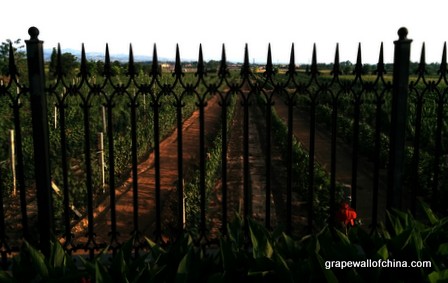By Jim Boyce | China wine trade observers generally believe imports are gaining ground on domestic producers and have about one third of the market. That view snugly fits with two commonly cited statistics for 2016: local production was pegged at 1.1 billion liters while Customs reported about 480 million liters of incoming wine. Those stats give imports just over 30 percent of the market and some people are confident that share will eventually pass 50 percent.
But is it possible that imports already have more than half of the market? Let’s consider a few factors.
First, China also imported about 145 million liters of bulk wine last year. Whether bottled as foreign wine or mixed with Chinese juice and sold under local labels, it boosts total imports to 625 million liters. Against the domestic production figure of 1.1 billion liters, the import share rises to 36 percent.
Second, the national production figure is complied from provincial and regional numbers. But, as noted before, the same wine might be counted multiple times. For example, consider a winery in Province A that makes and reports a million liters of wine. It then sells that wine as bulk to a winery in Province B, which uses it for blending and reports an additional million liters of production. In other words, one million liters becomes two million liters by the time it reaches the national spreadsheet.
Third, there are other ways to gauge wine production. Industry insiders say calculating vineyard coverage versus average yield per hectare, or looking at a factor like the fermentation capacity at wineries, suggest the 1.1 billion number doesn’t match production.
Several insiders told me they consider a reasonable figure to be 500 million liters, at most. If true, that would mean domestic production is roughly equal to bottled imports, and below total imports when we include bulk. And that would mean imports already have over half—55 percent or more—of the China wine market. It would also mean that the consumer sector is much smaller than is commonly assumed.
This isn’t to suggest anything devious is happening. In the above example, Province A and Province B did each add a million liters of wine and reported it: and who can blame them given the stress in China on achieving growth? The national statistic simply reflects this.
The point is that a second statistic, one that considers factors such as wine grape vineyard coverage, tons of grapes crushed and fermentation capacity, and that takes into account how wine production is counted by regions and provinces, would also be useful, especially for those who seek deeper insights into how much wine China is making and drinking.
Follow Grape Wall on Facebook and Twitter. Sign up for the free China wine e-newsletter below. And check out sibling sites World Baijiu Day and Beijing Boyce.
Grape Wall has no sponsors of advertisers: if you find the content and projects like World Marselan Day worthwhile, please help cover the costs via PayPal, WeChat or Alipay.
Sign up for the free Grape Wall newsletter here. Follow Grape Wall on LinkedIn, Instagram, Facebook and Twitter. And contact Grape Wall via grapewallofchina (at) gmail.com.
